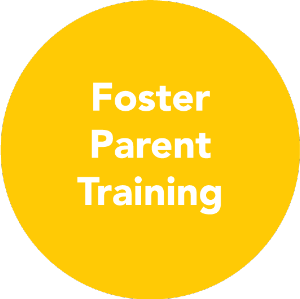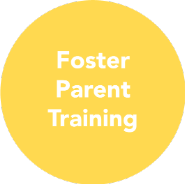Adriel Blog > May 2, 2024
What Is National Foster Care Month? A National Call to Arms for Local Care.
Established in 1988 and coordinated by the U.S. Department of Health and Human Services (HHS) through the Children’s Bureau, a division of the Administration for Children and Families (ACF), National Foster Care Month is an initiative to raise awareness about the needs of children in foster care and to recognize the contributions of foster parents, social workers, and community partners.
Each May, National Foster Care Month shines a spotlight on the many thousands of children and youth in foster care across the U.S.—including right here in Ohio. The number is about 365,000, according to the Child Welfare Information Gateway, a service of the Children's Bureau and the official campaign hub host. This government-led initiative provides resources, messaging, and promotional materials to support awareness, appreciation, and action around foster care.
At Adriel, we are deeply connected to the initiative, but to us, it’s even more simple. National Foster Care Month is a true call to arms and action for local parents to be the one to help the kids in their own communities.
National Designation, Local Delivery
The month may be nationally designated, but virtually all foster care is local.* While federal structures like those mentioned above exist and are very important, it's local agencies, courts, families, and communities who do the practical work of foster care. Here's why:
- Foster care is administered at the county or state level, not federally. Each state, and often each county within a state (like in Ohio), operates its own child welfare system under broad federal guidelines.
- Placement decisions, licensing, case management, and support services are all managed by local child welfare agencies or contracted providers, such as Adriel. Adriel contracts with children’s services agencies across Ohio.
- Community-based organizations, like Adriel, play a crucial role in recruiting, training, and supporting foster families within their service areas.
- Federal law, known as the Every Student Succeeds Act (ESSA), contains key protections for students in foster care to promote school stability and success. This requires foster children to continue attending school at their current school while placed in foster care unless it is in the child’s best interest not to remain at their home school.
*One exception is interstate placements, which do happen, especially when family connections cross state lines. These involve federal coordination through the Interstate Compact on the Placement of Children (ICPC). You can find information about rules, procedures, and resources through the American Public Human Services Association (APHSA). For state-specific information, the ICPC State Pages website provides contact details and relevant laws for each state.
Why National Foster Care Month Matters
National awareness campaigns like National Foster Care Month are federally promoted to support all local systems. That means elevated visibility of the overall problem as well as the specific solutions available and still needed across the system.
The national focus is also important because Federal policies, funding, and standards (via the U.S. Children’s Bureau and Title IV-E funding) shape how states operate foster care.
Most local foster care agencies like Adriel are funded through a mix of federal, state, and sometimes local or private sources, but federal funding plays a major role, primarily in the form of reimbursement for a significant portion of foster care maintenance and certain administrative and training costs.
To access these funds, states (and agencies working under them) must meet federal requirements and standards, which establish consistent safety and quality benchmarks across states. This ensures that every child—no matter their ZIP code—receives a baseline level of protection, care, and opportunity.
Why Is It So Important that Foster Care Stay Local?
Foster care is local because the goal is to reunite the foster child with the biological family in every possible case, and if not, to find relatives able to care for the children through a kinship placement. Parental visitation is often part of the process, typically occurring weekly, so keeping the kids close to home is essential.
Equally (if not more) importantly, the situations that lead to the need for foster care and the transition processes are inevitably traumatic for the children. Placing them in foster homes where they can maintain connections, activities, and momentum in school is extremely beneficial in most cases. Here’s a deeper dive into why.
Preserves Stability and Familiarity
Staying local allows children to remain in familiar surroundings— near their schools, friends, extended family, doctors, and faith communities. This stability can ease the trauma of being removed from their home and support their emotional well-being.
Supports Educational Continuity
When children can remain in their original school, they’re less likely to fall behind academically or socially. School stability is linked to better outcomes in grades, attendance, and graduation rates. Studies show that school moves negatively impact foster children by causing them to miss or repeat lessons, lose credits, postpone assessments, and experience gaps in their receipt of special education services. Additionally, the stress of adjusting to a new set of teachers and classmates may provoke anxiety in some foster children.
Enables Family and Sibling Visits
Local placements make it easier to maintain frequent contact with biological parents and siblings, which is essential for preserving family bonds and supporting successful reunification.
Builds a Community of Care
Keeping children in their community allows local support networks—neighbors, teachers, coaches, and mentors—to stay involved. Foster parents also benefit from proximity to local resources, caseworkers, and support systems.
Reduces Transportation Burdens
Local placements reduce travel time for court appearances, counseling, weekly supervised visits with family, and other services—minimizing disruption to the child’s routine and to the foster family's schedule.
How to Support Foster Families During National Foster Care Month and Every Day
Ohio is home to thousands of children in foster care. They need families who can offer stability, compassion, and hope. Unfortunately, the need for foster families continues to outpace availability. Becoming a foster parent is a profound way to serve your community and change a child’s life.
We know that not everyone is called to foster, but everyone can help. Here are a few meaningful ways to support foster children in your community:
Be Active
Being a foster parent is not the only way to get actively involved to directly help children. We invite you to volunteer part time to:
• Mentor and care for foster children in your home overnight, for a weekend, or up to 14 days, as a short-term respite foster parent,
• Be a transporter for children in foster care to take them safely to and from their weekly visits with their biological family,
• Be a daytime alternative caregiver/ babysitter for local foster families,
Be Generous
Time is not the only resource that is valuable in our effort to help foster children! There are many ways to help by donating financially, for example, providing:
• Meals or gift cards to foster families in your community when they have new foster children placed in their home,
• Gift cards or monetary donations to foster care agencies to provide support for foster youth birthdays, summer camps, lessons, tutoring, sports, extra-curricular activities, and more.
Be Present
Foster families are everywhere, and unless you show up and engage in the community, you may never know who they are. The more you participate through church or other community organizations, the more opportunities you will have to meet and support these loving care givers through prayer, encouragement,
and the gift of your time and talents.
Be Aware
When you spend time with others in the community, whether as a family or as a fellow parent or guardian, you will have opportunities to observe behavior and interaction among children. Watch for signs of isolation, bullying, or inappropriate behavior. Whether you choose to intervene or alert the appropriate adults/authorities, your watchful attention can make a difference.
Be Accessible
One of the most valuable ways you can support your neighbors is to let them get to know you! Building trusted relationships with others in your community means they know who they can count on. But trust doesn’t come with a handshake, especially when children are involved. It takes time, reliability, active listening, and open communications to earn the right to help when help is needed.
Be Curious
Ask questions to discover what your neighbors need and know the resources available to help them, or help you help them. Along with Adriel and other foster care agencies, there are many organizations available to help. Here are some we partner with frequently to support foster families:
• Ohio Department of Children and Youth (DCY)
• Ohio Department of Mental Health and Addiction Services
• Council on Accreditation (COA)
• Ohio Children's Alliance
• Teaching-Family Association (TFA)
• The Mennonite Church USA
• The Central District Conference of the Mennonite Church
• The Ohio Conference of the Mennonite Church
Remember, every act of kindness, big or small, makes a difference.
Are You Ready to Start Making a Difference for Foster Families During National Foster Care Month?
National Foster Care Month is more than a calendar event. It’s a call to action, and for some, a call to YOUR arms! If you’ve ever considered fostering, now is the time to explore that calling. If not, try some of the tips above and explore your options for the future.









